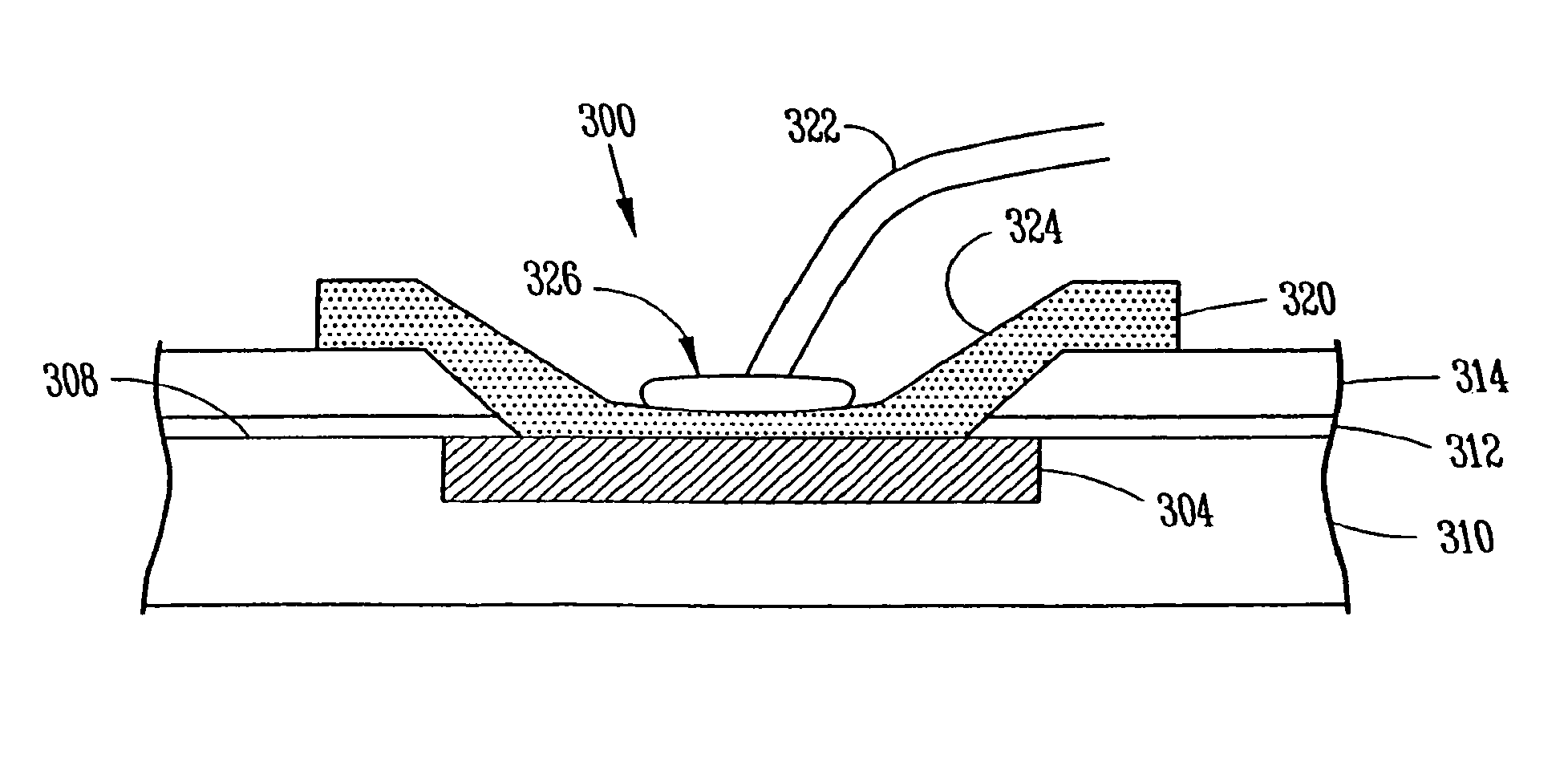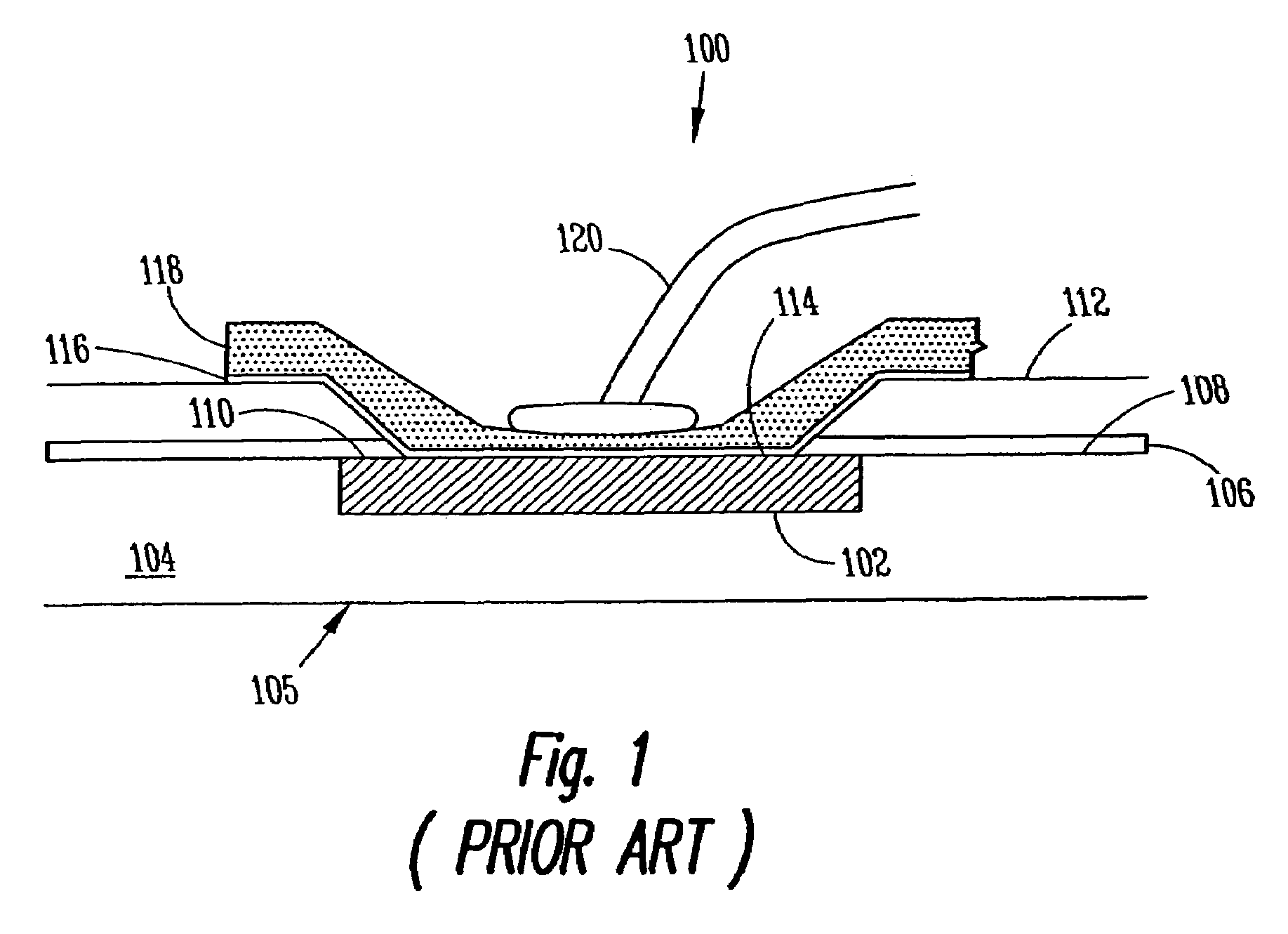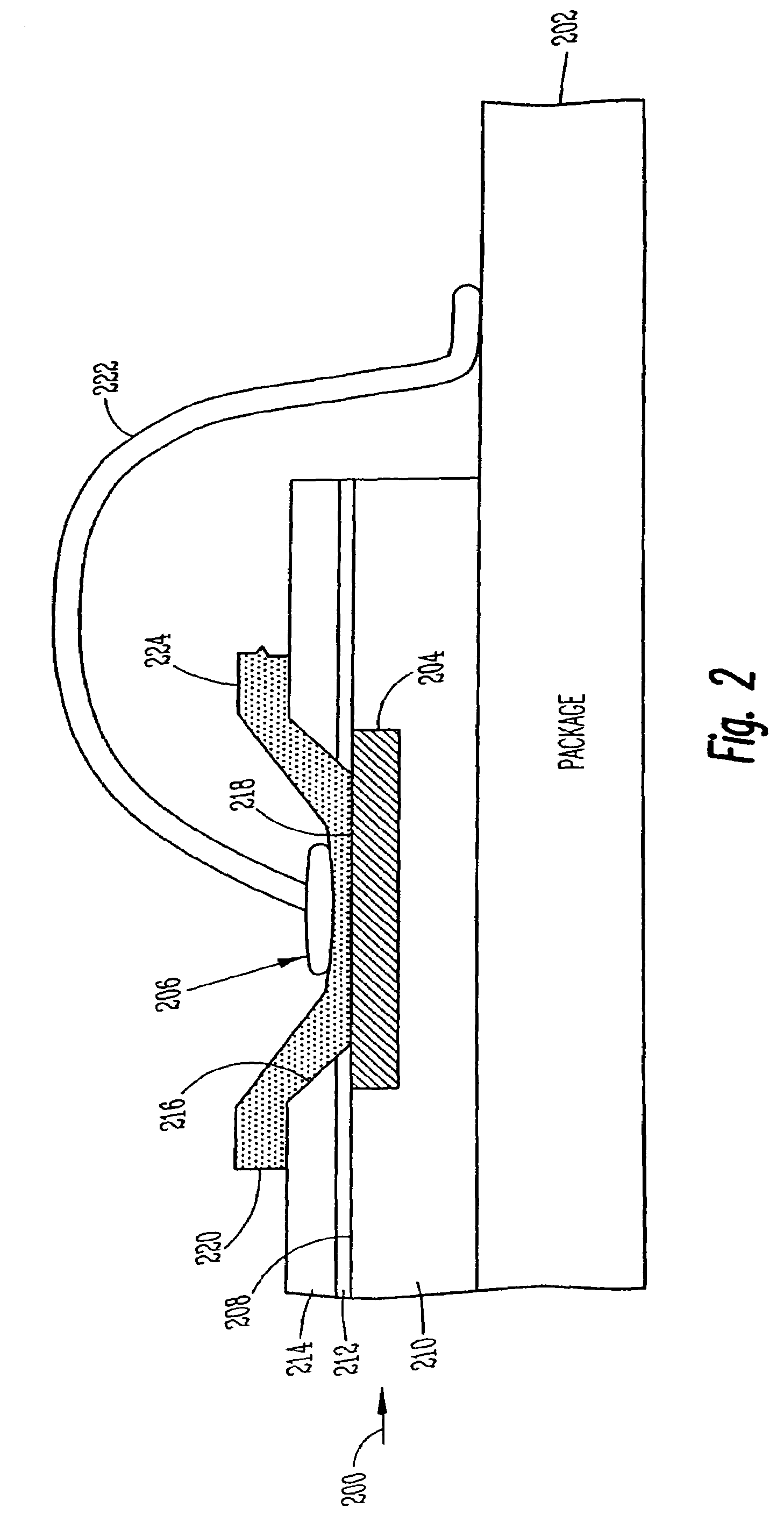Wirebond structure and method to connect to a microelectronic die
a wire bond and microelectronic die technology, applied in the direction of thin material processing, semiconductor/solid-state device details, semiconductor devices, etc., can solve the problems of disconnection of the bond, weak mechanical strength of the electrical contact formed by connecting the aluminum bond wire directly to the copper pad, and the tendency of the bond to weaken
- Summary
- Abstract
- Description
- Claims
- Application Information
AI Technical Summary
Benefits of technology
Problems solved by technology
Method used
Image
Examples
Embodiment Construction
[0012]In the following detailed description of the preferred embodiments, reference is made to the accompanying drawings which form a part hereof, and in which is shown by way of illustration specific embodiments in which the invention may be practiced. It is to be understood that other embodiments may be utilized and structural changes may be made without departing from the scope of the present invention.
[0013]FIG. 2 is a cross-section of a wirebond structure 206 to connect to a microelectronic die 200 in accordance with the present invention. FIG. 2 shows a partial view of a microelectronic die package 202 connected to the microelectronic die 200 or integrated circuit by the wirebond structure or assembly 206 in accordance with the present invention. The wirebond structure 206 of the microelectronic die 200 includes a copper bond pad 204 that is formed in a surface 208 of an inter-layer dielectric 210 or substrate of the microelectronic die 200. A first passivation layer 212 may b...
PUM
| Property | Measurement | Unit |
|---|---|---|
| time | aaaaa | aaaaa |
| annealing temperature | aaaaa | aaaaa |
| temperature | aaaaa | aaaaa |
Abstract
Description
Claims
Application Information
 Login to View More
Login to View More - R&D
- Intellectual Property
- Life Sciences
- Materials
- Tech Scout
- Unparalleled Data Quality
- Higher Quality Content
- 60% Fewer Hallucinations
Browse by: Latest US Patents, China's latest patents, Technical Efficacy Thesaurus, Application Domain, Technology Topic, Popular Technical Reports.
© 2025 PatSnap. All rights reserved.Legal|Privacy policy|Modern Slavery Act Transparency Statement|Sitemap|About US| Contact US: help@patsnap.com



